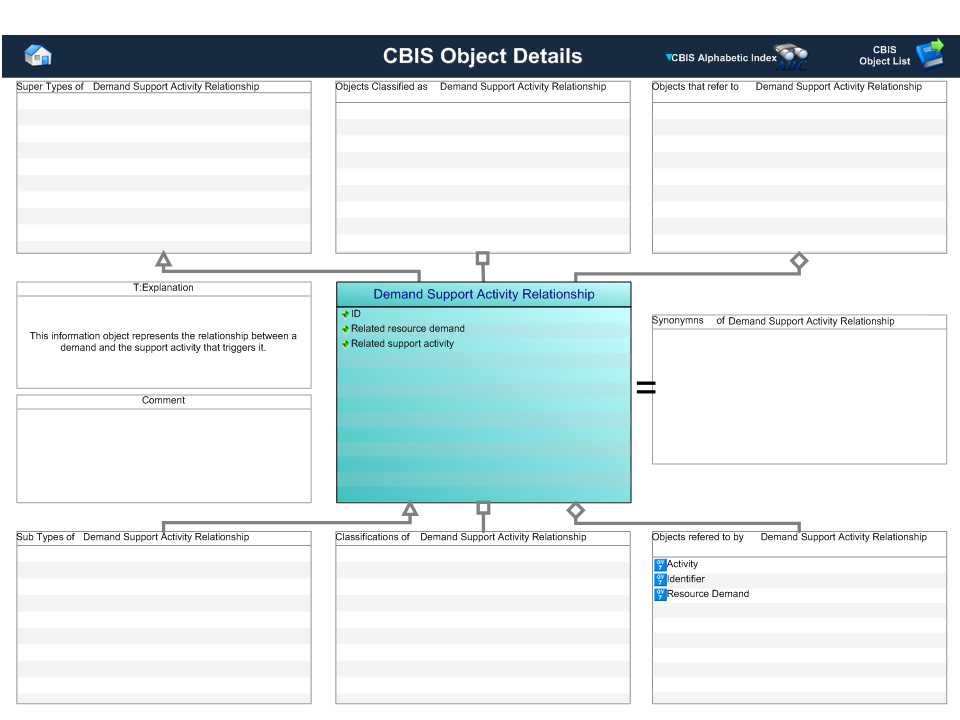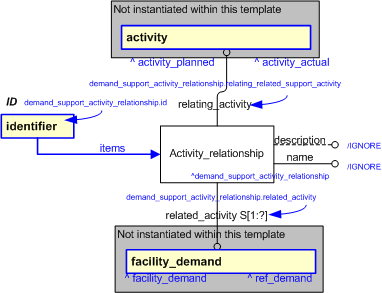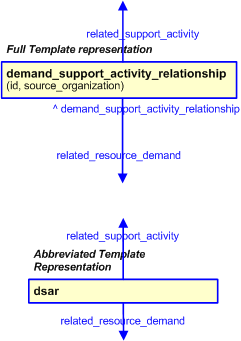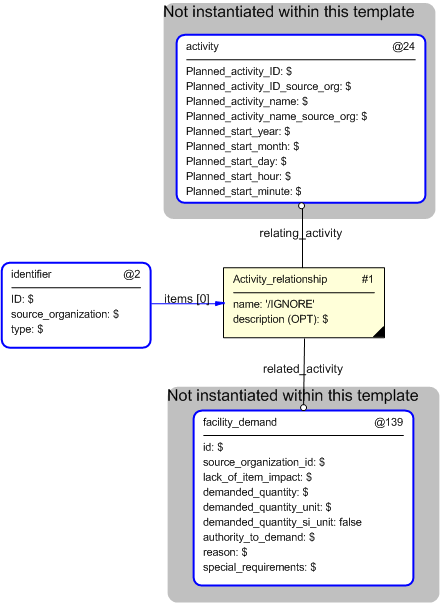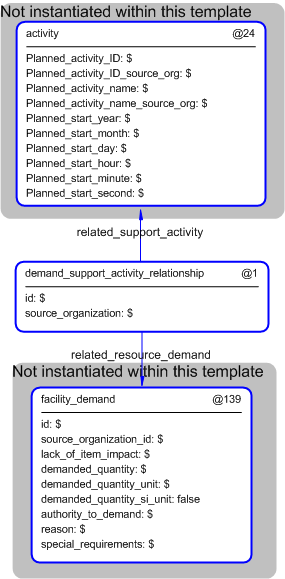Template:— demand_support_activity_relationship (dsar)
Context:— UK_Defence |
Date: 2009/04/17 11:11:43
Revision: 1.3
|
This section specifies the template demand_support_activity_relationship.
NOTE
The template has been defined in the context of
UK_Defence.
Refer to the business context for details of related templates.
NOTE
An explanation of a template and the associated instantiation path is
provided in the
Template overview
section.
This template describes how to represent a Demand Support Activity Relationship.
A Demand Support Activity Relationship is the means to relate a Demand (e.g. Facility Demand) to a support Activity when
that Activity is a driver for the demand.
This information object represents the information about a Demand Support Activity Relationship.
Figure 1 — A MOOD Business Architect representation of the Business Object: Demand Support Activity Relationship
The attributes of the Demand Support Activity Relationship object are tabled below.
|
Attribute name
|
Attribute description
|
Attribute type
|
Optionality
|
| ID |
This is the identifier of the relationship. It includes both the identifier and the source organization that provides the
identifier.
|
Identifier |
Mandatory |
| Related support activity |
This is the related support activity that is responsible for creating the Resource Demand. |
Relationship to Activity |
Mandatory |
| Related resource demand |
This is the type of Resource Demand created in response to the Related support activity. |
Relationship to a Resource Demand subtype. |
Mandatory |
Table 1 — Demand Support Activity Relationship attribute details
The EXPRESS-G diagram in
Figure
2
shows the templates and EXPRESS entities that are required
to represent the template
"demand_support_activity_relationship".
The text highlighted in blue shows the template parameters.
Figure 2 — An EXPRESS-G representation of the Information model for demand_support_activity_relationship
The graphic for the template to be used in other EXPRESS-G diagrams
is shown in Figure
3
below.
Figure 3 — The graphical representation of the demand_support_activity_relationship template
The following input parameters are defined for this template:
The identifier of the relationship.
The identifier of the organization responsible for identifying the relationship.
This is the reference to the actual facilty that is preferred.
This is a reference to the required facility type.
The following reference parameters are defined for this template:
Allow the
Activity_relationship
entity instantiated in this path to be referenced when this template is used.
%^target = $demand_support_activity_relationship.demand_support_activity_relationship%
The instantiation path shown below specifies the entities that are to be
instantiated by the template.
A description of templates and the syntax for the instantiation path is
provided in the
Templates Help/Information section.
-- create the relationship %^demand_support_activity_relationship =
Activity_relationship%
^demand_support_activity_relationship.relating_activity ->
@related_support_activity
^demand_support_activity_relationship.related_activity ->
@related_resource_demand/
identifier(
ID=@id,
source_organization=@source_organization,
type='activity_relationship_Identification_code',
items=^demand_support_activity_relationship)/
The instance diagram in Figure
4
shows an example of the EXPRESS entities and templates that are instantiated by the template:
/demand_support_activity_relationship(id='', source_organization='', related_support_activity='@24', related_resource_demand='@139')/
(an illustration of the consolidated demand_support_activity_relationship template is shown in
Figure
5 below.)
Figure 4 — Entities instantiated by demand_support_activity_relationship template
The instance diagram in
Figure
5
shows the graphic symbol for the template that is to be
used in other instance diagrams. The example template is:
/demand_support_activity_relationship(id='', source_organization='', related_support_activity='@24', related_resource_demand='@139')/
Figure 5 — Instantiation of demand_support_activity_relationship template
Characterizations
No common characterizations of the template
demand_support_activity_relationship
have been identified. However, the ISO 10303-239 EXPRESS model
may enable other assignments to the entities instantiated by the template.
